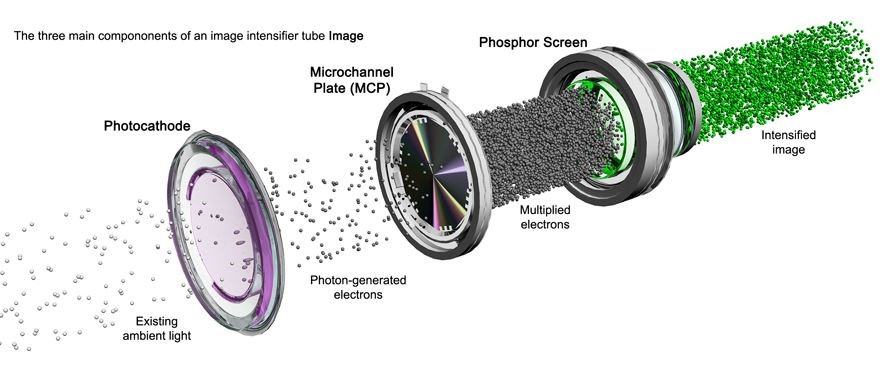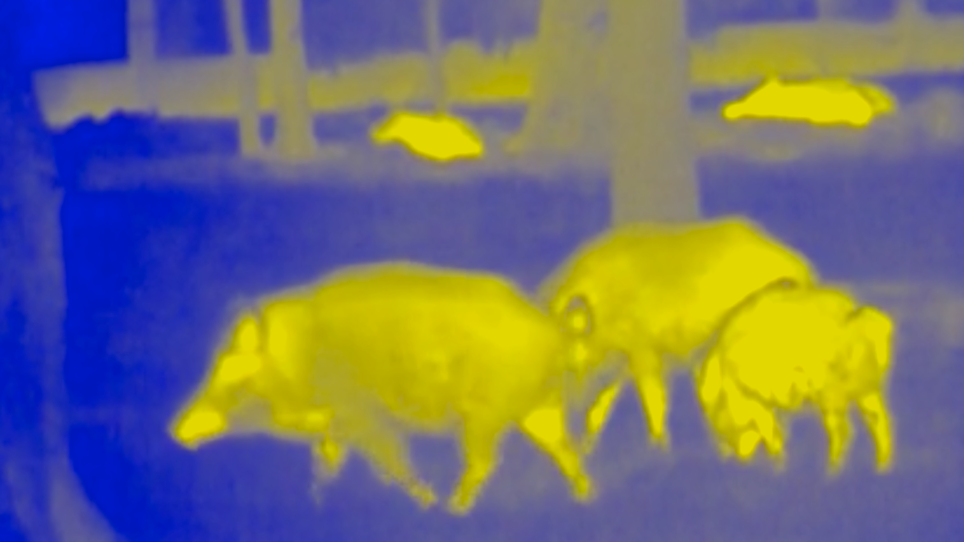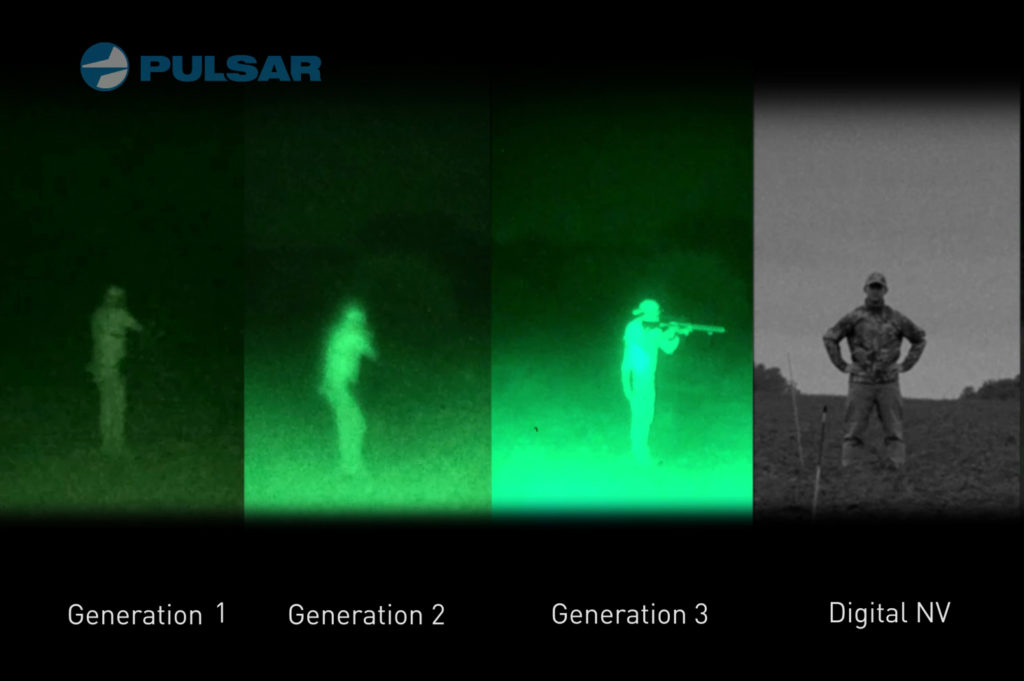Featured Photo: Imaging as seen using a thermal imaging scope by Pulsar
Night vision uses infrared light – unseen by the human eye – to illuminate. Its primary role is to provide imaging in low light conditions. Thermal imaging can produce heat signature imaging regardless of time of day. This method relies on heat emitted by objects to detect targets.
Here, we’ll unpack the details and breakdown the uses and difference between digital night vision and thermal imaging with a Q&A, which includes a closer look at digital verses generational night vision and why it matters.
Digital Night Vision
Q.
First, what is night vision?
A.
Most of us have seen night vision in use on the movies or on TV. Others in the hunting community have had first-hand experiences with the technology. But a lot of people are unsure about the different types of night vision that fall under that broader label. Most agree there are three types:
- Image intensifier night vision
- Digital night vision
- Thermal imagers
Q.
OK, before we get into the thermal technology, let’s talk about night vision and how it works.
A.
So with night vision technology, it illuminates by using infrared light the human eye cannot see, light from the stars or moon, for instance. But the devices do require light and will not operate in total darkness.
These devices are equipped with what is known as an image intensification tube (IIT) or, if the device is digital, then it relies on a charge-coupled device (CCD) or complementary metal-oxide-semiconductor (CMOS) and a micro display. The digital night vision is the most advanced type within the group of night vision devices that does not use thermal imaging.

Photo: Pulsar
Q.
Night vision is not a new technology is it?
A.
You have generations. With each generation, the image is sharper and more detailed and the technology is more affordable. Generation 0 dates back to 1929 and was first used by the German army in World War II. It’s now considered obsolete and is not longer in production. In between Generation 0 and the more advanced digital night vision tech sold today are generations 1, 2 and 3.
Bonus: History Trivia
Earlier this year, the Smithsonian Magazine published, “Seeing in the Dark: The History of Night Vision.” There are lots of interesting factoids there, including this one: After World War II, when night vision was first introduced in warfare, the U.S. Army worked more extensively to develop the technology by collaborating with the Radio Corporation of America, better known to many as RCA, manufacturer of radios and phonograph records. By the mid-1960s, scientists had developed what is now known as first generation night vision devices.
Q.
What’s the most significant differences between the original generations of night vision and digital night vision?
A.
Because digital devices don’t rely on the traditional image intensifier tube, light is converted to an electronic signal and that’s a difference maker because, now, with the digital devices, you don’t have to worry about damaging the tech in the daytime. Daytime use is completely safe. The other key feature of digital is the images are much sharper and more detailed than traditional night vision.
Thermal vision
Thermal vision or thermal imaging is the most sophisticated technology on the market. This technology does not rely on existing light the human eye cannot see but, instead, it detects heat emitted by objects. The warmer the object, the more infrared long-wave light it radiates and the more detectable it is.
Q.
So how does reading the heat create an image?
A.
The devices use detectors known as bolometers. They can read the difference in temperature between a heat-emitting object and its background and this is what creates the image – a thermal profile of the scene.
Q.
These devices are more expensive than the night vision optics. What features make the extra cost worth it?
A.
Thermal vision can operate in total darkness unlike devices that rely on the intensifier tubes to capture low light. And thermal vision overcomes more than darkness. With this tech, someone is also able to see clearly through fog, smoke, dust and foliage – and that last one is a game changer in hunting situations.







